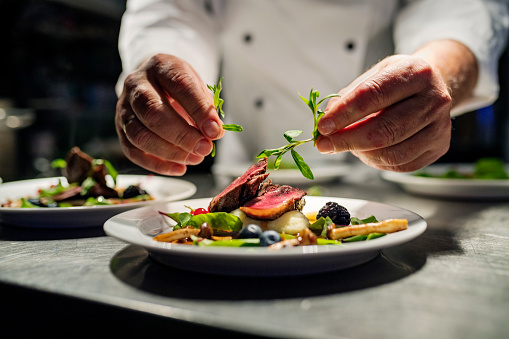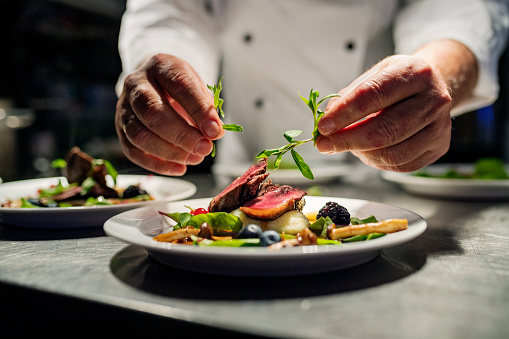In the tapestry of home decor, the kitchen emerges not just as a functional space but as a sanctuary for culinary artistry and gastronomic delights. This article embarks on a captivating journey into the intersection of cooking, home decor, and the profound experience of sharing exceptional cuisine. Beyond the mere preparation of meals, the kitchen becomes a canvas where aesthetics and culinary prowess coalesce, creating an immersive experience that extends far beyond the dining table.
The Alchemy of Culinary Creation
Culinary artistry, like any other form of creative expression, requires a conducive environment. The modern kitchen, with its fusion of form and functionality, serves as a stage for this gastronomic alchemy. From the sleek lines of state-of-the-art appliances to the artisanal charm of bespoke cabinetry, every element contributes to an ambiance that inspires culinary creativity.
The choice of materials in kitchen design plays a pivotal role in creating a harmonious space. Natural stone countertops, such as marble or quartz, not only offer a luxurious aesthetic but also provide a durable surface for food preparation. Wood accents, whether in the form of cabinetry or open shelving, add warmth and a touch of rustic elegance to the culinary space.
Ergonomics, as a fundamental principle in kitchen design, ensures that the layout facilitates a seamless flow of activities. The positioning of the stove, sink, and refrigerator—the culinary triad—ensures efficiency, allowing the chef to move effortlessly between tasks. High-quality lighting, both functional and decorative, illuminates the culinary theater, creating an ambiance that enhances the cooking experience.
Gastronomic Spaces: Where Home Decor Meets Culinary Expression
The modern concept of home decor extends beyond the confines of traditional living spaces to embrace the kitchen as a pivotal element in design. Kitchen islands, once purely functional, now serve as focal points that seamlessly integrate with the overall aesthetic of the home. The choice of materials, finishes, and design details in the kitchen aligns with the overarching design theme of the residence, creating a cohesive and visually captivating environment.
Open-concept kitchens, with their fluid transition into living and dining areas, foster a sense of connectivity. The design language extends beyond the culinary space, creating a harmonious flow between the kitchen and surrounding decor. Thoughtful integration of colors, textures, and decorative elements ensures that the kitchen becomes an integral part of the home’s visual narrative.
Elevating the Dining Experience: Tablescapes and Culinary Decor
The art of gastronomic sharing extends beyond the act of cooking to the presentation of the culinary creations. Tablescapes, a term borrowed from the world of interior design, encapsulate the arrangement and decoration of the dining table. From carefully selected dinnerware to artistic placement of cutlery and the inclusion of thematic decor, tablescapes add an extra layer of visual delight to the dining experience.
Considerations for tablescapes often mirror the overall design aesthetic of the home. Minimalist, contemporary kitchens find resonance in simple and elegant table settings, while more eclectic culinary spaces may embrace a mix of colors, patterns, and unconventional elements. The result is not just a meal but a curated experience that engages all the senses.
The Art of Culinary Decor: Beyond Taste
Culinary decor transcends the traditional realms of home design by encompassing the visual and olfactory dimensions. The kitchen becomes a canvas for culinary art, where the presentation of dishes is as important as their flavors. The use of edible flowers, microgreens, and artistic plating techniques transforms each meal into a work of art.
Incorporating herbs and potted plants into kitchen decor not only adds a refreshing visual element but also serves a functional purpose. Aromatic herbs contribute to the olfactory ambiance of the space, enhancing the overall sensory experience. The artful arrangement of spices, oils, and condiments becomes an integral part of the kitchen’s decor, reflecting the chef’s personality and culinary style.
Technological Innovation in Culinary Design
As technology continues to advance, it has become an integral part of the culinary experience. Smart kitchen appliances, from precision ovens to intelligent refrigerators, are seamlessly integrated into the kitchen’s design. The result is a space where cutting-edge technology enhances efficiency without compromising the aesthetics of the culinary sanctuary.
Smart lighting systems, adjustable ventilation hoods, and connected kitchen devices contribute to a seamless and technologically sophisticated culinary environment. The integration of touch-screen interfaces and digital recipe displays not only adds a futuristic flair but also elevates the functionality of the kitchen, creating a space where innovation converges with culinary passion.
Conclusion
The marriage of culinary artistry, home decor, and the joy of sharing exceptional cuisine creates a tapestry of experiences that extends far beyond the mere act of cooking. The modern kitchen, meticulously designed with an emphasis on aesthetics and functionality, serves as a stage for gastronomic expression. From the alchemy of culinary creation to the artful presentation of dishes and the integration of technology, the culinary space becomes a sanctuary where passion and design excellence converge. As we celebrate the intersection of culinary and design, the kitchen emerges not only as a practical space but as a canvas where the art of living is elevated to new heights.










No Comment